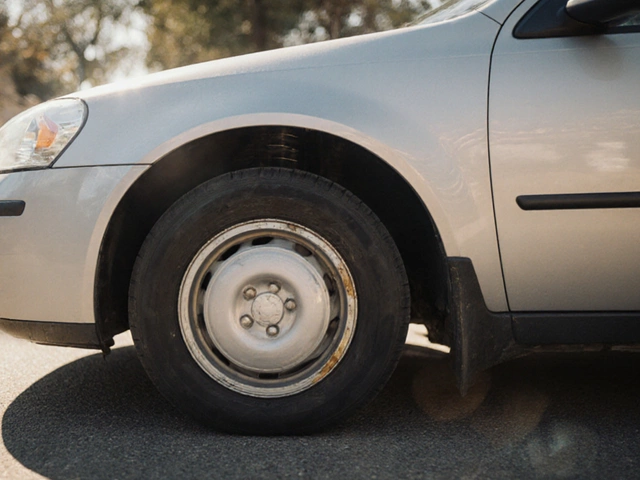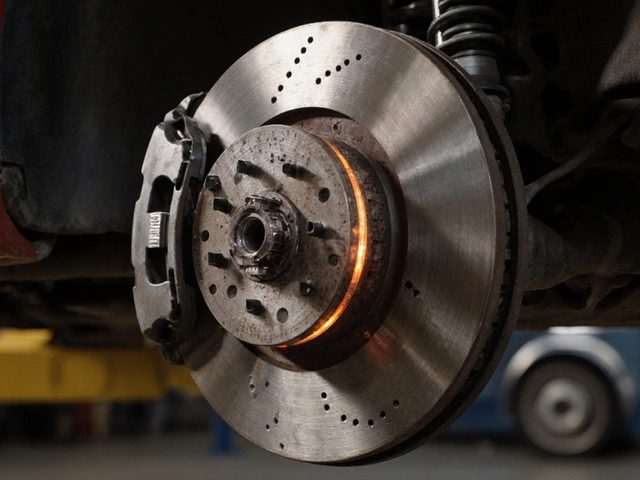If your car keeps sputtering or refuses to start, there’s a good chance you’ve got a fuel pump problem. Here’s the thing—thousands of drivers think swapping out a bad fuel pump is a piece of cake until they’re under the car, knuckles covered in grime, staring at parts that don’t look anything like they did online. So, is fixing a fuel pump really that simple?
First off, it’s not just “pop the hood and swap the part.” Most fuel pumps sit inside your gas tank, which means draining the tank or dropping it entirely. That’s not just awkward—it’s seriously heavy and involves dealing with gasoline. Plus, some cars have access panels under the back seat or trunk, making life a little easier, but you won’t know until you check your model.
If you’re thinking about taking this on, you’ll need a decent set of tools: jack stands, a socket set, fuel line disconnect tools, and don’t forget a safe way to handle gas. Skipping safety is what lands folks in viral videos with fireballs and singed eyebrows.
- How a Fuel Pump Works (and Why It Fails)
- Can You Spot the Warning Signs?
- What Makes Replacing a Fuel Pump Tricky
- DIY or Call the Pros? Making the Right Call
How a Fuel Pump Works (and Why It Fails)
If you’ve ever wondered what keeps your engine fed, it's the fuel pump doing all the heavy lifting. Its job is to pull gas from your tank and get it up to the engine, keeping the whole thing running smooth. On most cars made after the mid-90s, you’ll find an electric fuel pump hidden right inside the gas tank, while a few older rides still use mechanical pumps bolted to the engine.
What’s wild is just how much pressure these pumps can crank out—most modern systems need anywhere from 40 to 60 PSI (pounds per square inch) to keep today’s engines happy. That’s a lot more juice than the old carburetor days, where any pressure over 10 PSI was fancy. Your fuel system relies on this steady high-pressure stream; if the pump stutters, your car can run rough, lose power, or just quit.
But why do fuel pumps fail? It usually comes down to a few big reasons:
- Wear and Tear: These pumps spin constantly whenever you drive. With age, the motor and internals get tired and just give up.
- Dirty Fuel: Dirt, rust, or debris in your tank can clog the pump or grind away at its guts. Bad gas accelerates the damage.
- Running Low on Gas: Letting the tank run near empty isn’t just stress for the wallet—the pump depends on being bathed in fuel to stay cool. Starving it of fuel, especially on summer days, cooks it from the inside out.
- Electric Gremlins: Faulty wiring or weak electrical connections can kill a fuel pump, sometimes in an instant.
If you want numbers, on average, an electric fuel pump is good for about 100,000 miles, but that lifespan can drop fast if there’s dirt or bad wiring involved. Just take a look at this rough data:
| Cause of Failure | Estimated Lifespan (Miles) |
|---|---|
| Normal use, clean fuel | 100,000+ |
| Frequently low tank | 60,000–80,000 |
| Dirty fuel | 40,000–60,000 |
Spotting trouble early makes all the difference. If your ride’s suddenly down on power, the fuel pump should be high on your troubleshooting list.
Can You Spot the Warning Signs?
When a fuel pump starts to fail, your car won’t just die quietly. Usually, it drops hints along the way if you know what to listen and watch for. Catching these warning signs can save you from being stranded or spending money on the wrong repair.
Here’s what usually happens when a fuel pump is on its last legs:
- Whining noise from the gas tank: If you hear a constant, loud whining coming from near the gas tank, that’s a classic red flag. Healthy pumps make a low hum you barely notice.
- Hard starting or no start: If your car cranks but doesn’t start, or takes way longer to fire up, suspect the pump. This happens the most when the pump struggles to send fuel to the engine.
- Stalling – especially when hot: Your car might run fine for a bit but then stall out at random, especially after longer drives. That’s because a dying pump can’t keep up when things heat up.
- Losing power when going uphill or hauling loads: If you press the gas and the car bogs down or loses speed, the fuel pump could be starving the engine.
- Sudden surges: Jerky bursts of speed without pressing the pedal harder? The pump might be delivering fuel unevenly.
- Poor fuel economy: You may notice more stops at the pump as a failing fuel pump messes with fuel delivery, making the engine gulp more gas.
It’s easy to mix these symptoms up with other issues—like a clogged fuel filter or a bad spark plug—since they overlap. But a key difference with fuel pump trouble is that the problems get worse fast, especially the stalling and hard starts.
| Symptom | Possible Cause | DIY-Friendly Fix? |
|---|---|---|
| Whining Noise | Failing Fuel Pump | Yes (if you catch it early) |
| Hard Starting | Weak Pump or Bad Relay | No (needs troubleshooting) |
| Stalling When Hot | Overheating Pump | Possible (if you're comfortable with tank removal) |
Don’t just guess, though. A proper fuel pressure test is the go-to check for pump issues. You can rent a gauge from an auto parts store and see if your system holds the right pressure (usually 30-60 PSI, but always check your car’s specs). If it reads low, that’s your smoking gun. That’s when fixing or replacing your fuel pump moves from ‘maybe’ to ‘must.’

What Makes Replacing a Fuel Pump Tricky
Here’s the no-nonsense truth: changing out a fuel pump can get frustrating fast. Most pumps live inside the gas tank, not under the hood like a battery or air filter. So, half the job is just getting to it. For modern cars, this almost always means dropping the whole tank. These things can weigh over 80 pounds when full, and even "empty" tanks usually splash out enough leftover gas to make a mess or worse—a fire hazard if you haven't disconnected the battery.
Some cars do have handy access panels hiding under the back seat or in the trunk—if you luck out, you won’t have to deal with wrestling a giant, awkward tank. But check your car’s repair manual first before grabbing any tools.
Getting the tank out is only the first headache. The fuel lines are pressurized, so you can’t just pull them off. You’ll need a special fuel line disconnect tool for most modern setups, plus patience to avoid snapping plastic clips or fuel lines. Forgetting to relieve pressure in the system means you’ll get sprayed with gasoline. Not fun at all, and definitely not safe.
The electrical part isn’t simple either. The pump runs off wires connected inside the tank. Screw up the wiring, and your pump won’t work—even if it’s brand new. Mixing up wires can even fry your new fuel pump instantly. Double-check connections and take pictures as you go if it helps.
- Always disconnect the battery first before doing anything with fuel lines or the pump.
- No open flames, no smoking nearby—gas fumes are way more flammable than most people realize.
- Keep a fire extinguisher close, even if you think you won’t need it.
One more thing to keep in mind: modern fuel systems are way more complex compared to cars from the '90s. Some have secondary pumps, pressure sensors, and electronic control that all work together. A simple mistake here can trigger check engine lights or even damage other car systems. Without the proper scan tool, you might end up just guessing what went wrong.
| Common Challenges | How Often They Occur |
|---|---|
| Dropping the fuel tank | 70% of DIY repairs |
| Relieving fuel pressure | Almost every job |
| Access issues (no panel) | About 60% of vehicles |
| Fuel line tool needed | On most cars after 2004 |
| Electrical mix-ups | Common with first-timers |
So, while a fuel pump repair or replacement isn’t impossible, it’s not quite plug-and-play. The little details make a big difference—and missing one can send you back to square one.
DIY or Call the Pros? Making the Right Call
So you’ve figured out it’s definitely the fuel pump. The big question: should you tackle it yourself, or bring in the pros? Let’s break it down with some facts and real-life basics before making that decision.
First, check your comfort level with tools and safety. Messing with a gas tank isn’t like swapping out an air filter. Fuel is flammable, and fumes can make you dizzy or cause headaches (I honestly can’t count the number of times I’ve seen someone ignore this and regret it fast). If you mess up, you might not just risk your car not starting—you’re looking at leaks or even potential fire.
Here’s what you should consider before a DIY fuel pump repair:
- Your car’s design: Some vehicles have easy access panels, others force you to drop the entire gas tank—hours of extra work.
- Do you have the right tools? You’ll need fuel hose disconnect tools, jacks, stands, and probably a buddy if the tank is heavy.
- Can you follow precise steps? A missed connector or pinched line will keep your ride stuck in park.
- Are you okay with handling gasoline? Even a small spill means airing out clothes for days (no joke—I had to toss a pair of shoes after my first attempt).
If any of this made you squirm, calling a pro might be worth it. On average, labor charges for fuel pump repair run $200 to $500, depending on your car and location. The pump itself? Anywhere from $50 for basics up to $800 for certain imports. Professionals already have experience, the right gear, and insurance if anything catches fire (which you don’t want to ever happen, trust me).
| DIY Cost | Pro Shop Cost |
|---|---|
| $70–$400 (parts only) | $250–$1,200 (parts + labor) |
One pro tip: Even if you go DIY, get your hands on the exact service manual for your car. That’s not a YouTube short; it’s the official instructions on fuel line routes, wiring, and safety checks.
Bottom line: if you’ve swapped fuel filters, handled gas before, and don’t mind hours under your car, go for it. If that sounds like a nightmare scenario, it’s smarter to leave it to the pros so your fuel pump fix doesn’t turn into a bigger mess.




